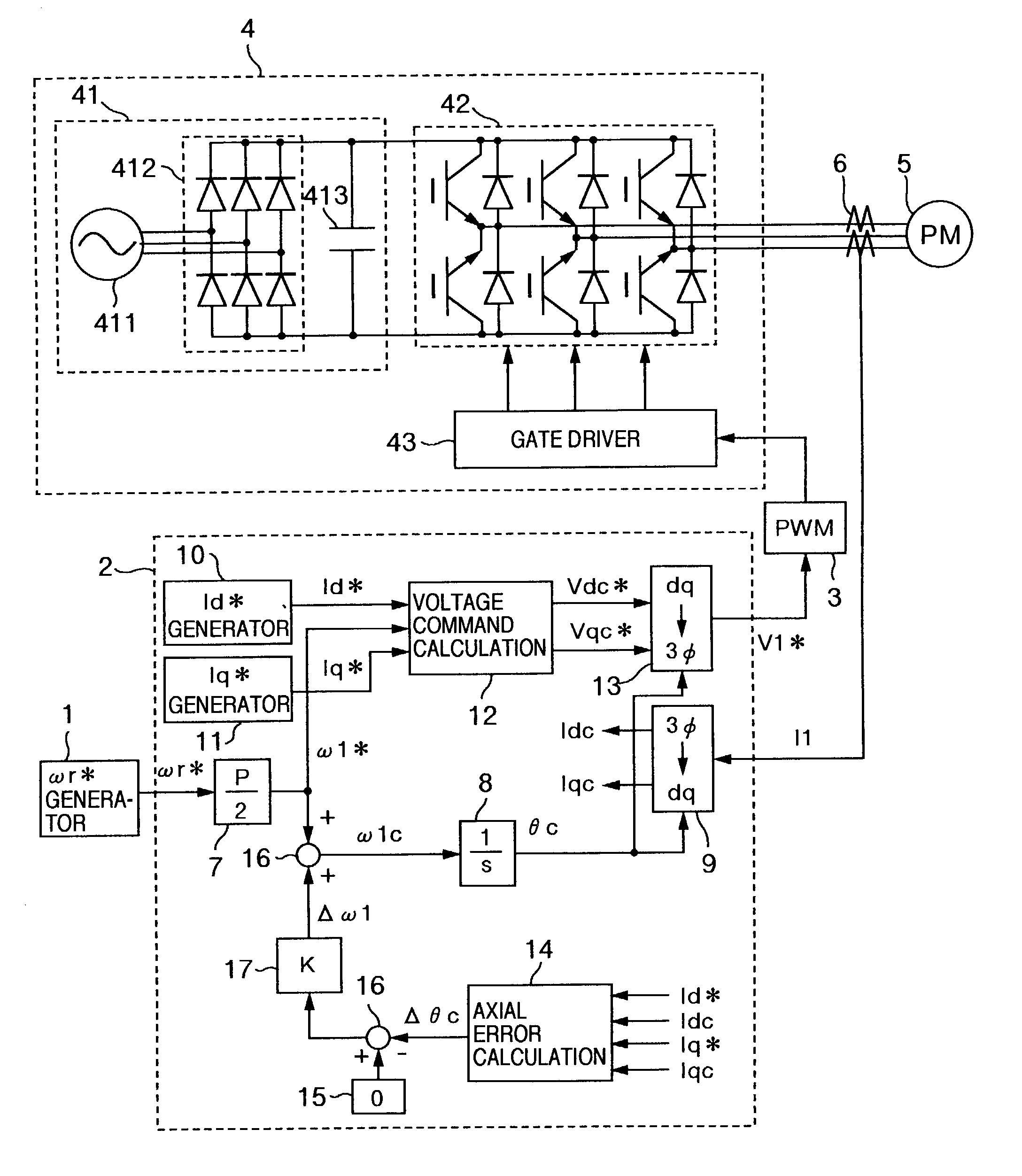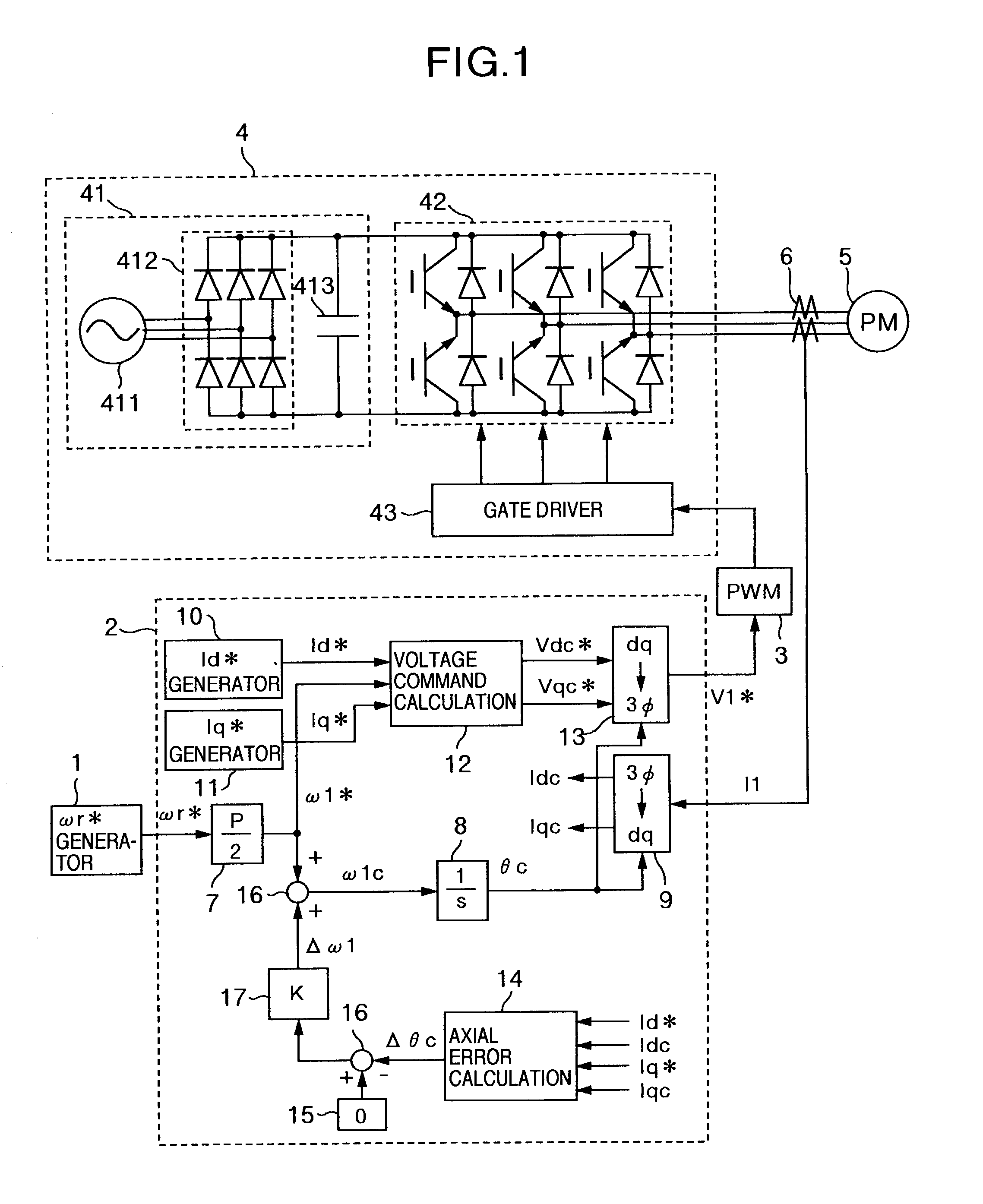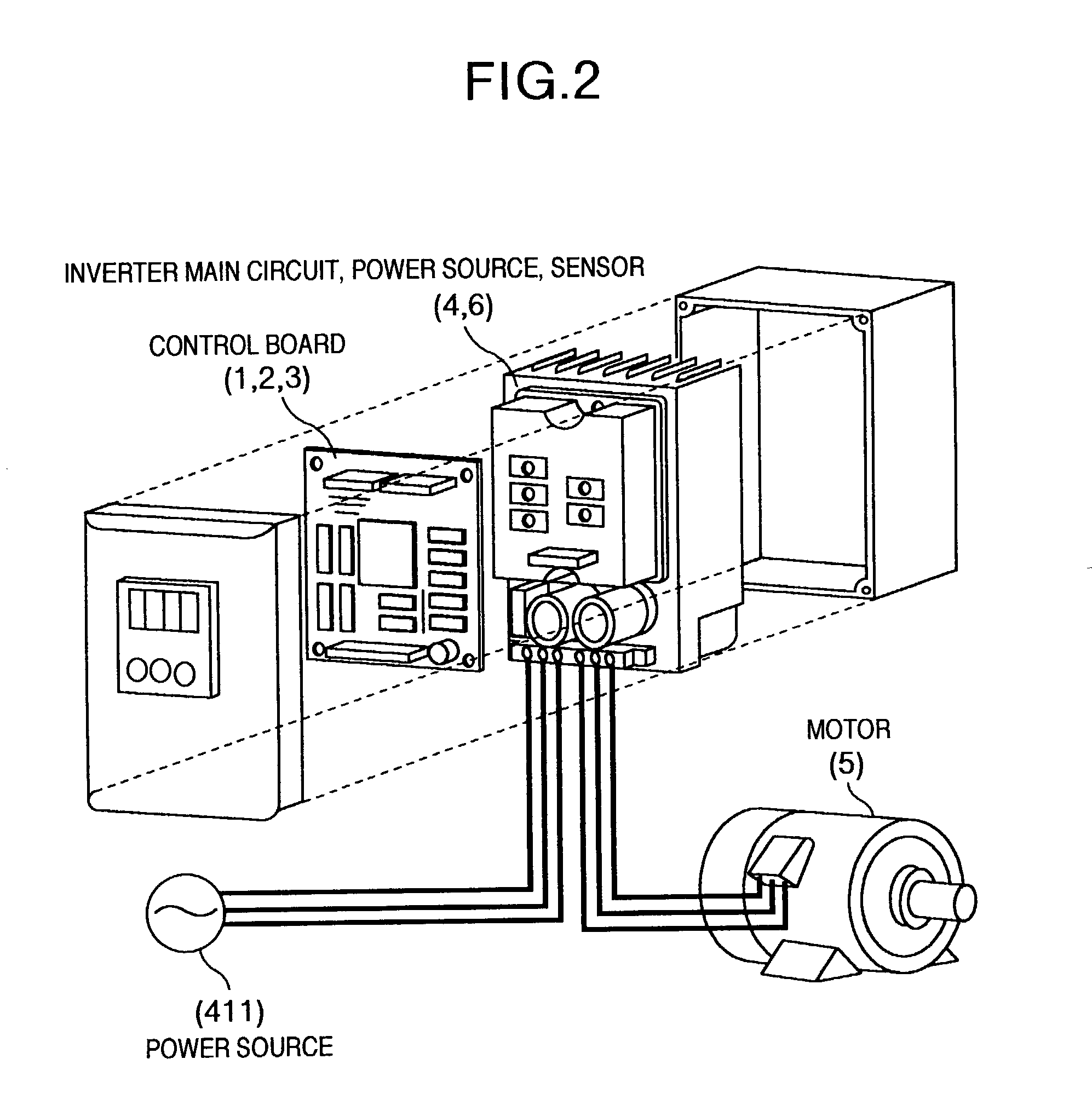Synchronous motor driving system and sensorless control method for a synchronous motor
a synchronous motor and control method technology, applied in the direction of motor/generator/converter stopper, electronic commutator, dynamo-electric converter control, etc., can solve the problems of electromagnetic noise increase, significant reduction in the efficiency of synchronous motor, and vibration of transitory parts
- Summary
- Abstract
- Description
- Claims
- Application Information
AI Technical Summary
Problems solved by technology
Method used
Image
Examples
first embodiment
[0049] First Embodiment
[0050] FIG. 1 is a block diagram showing a configuration of a synchronous motor driving system according to a first embodiment of the present invention. The synchronous motor driving system of the first embodiment comprises the following elements: a rotational speed command generator 1 for supplying a rotational speed command .omega.r* to the synchronous motor; a control unit 2 for calculating amplitude, a frequency and a phase of a voltage applied to the synchronous motor; a pulse width modulation (PWM) generation 3 for generating a pulse for driving an inverter 4 based on a voltage command V1*; the inverter 4 for driving the synchronous motor: the synchronous motor 5 to be controlled; a current detector 6 for detecting a current of the synchronous motor 5; a conversion gain 7 for converting the rotational speed command .omega.r* into an electrical angle frequency command .omega.1* of the synchronous motor with P set as a pole; an integrator 8 for calculating...
second embodiment
[0076] Second Embodiment
[0077] FIG. 5 is a block diagram showing a configuration of a synchronous motor driving system according to a second embodiment of the present invention. The synchronous motor driving system of the second embodiment includes an inverter 4B, a DC current detector 44 for detecting a current I0 flowing from a DC power supply unit 41 to an inverter main circuit unit, and a synchronous motor current estimator 18 for estimating a synchronous motor current based on a detected value of the current I0.
[0078] In the second embodiment of FIG. 5, the current detector 6 is removed from the configuration of the system shown in FIG. 1, and instead the DC current detector 44, and the synchronous motor current estimator 18 are added. The DC current detector 44 detects a current by using HALL CT or shunt resistance. The synchronous motor current estimator 18 estimates a synchronous motor current based on the detected value of the current IO, and a pulse waveform outputted from...
third embodiment
[0094] Third Embodiment
[0095] The above-described second embodiment enables the number of current sensors to be reduced, and thus provides an advantage of simplifying the configuration of the control system. However, the following problems are inherent. That is, when a rotational speed of the synchronous motor is low, and an output voltage is small, the periods of the modes 2 and 3 shown in FIG. 6 become short, necessitating reading of a very narrow pulse-like current. Waveforms in FIG. 6 are for principle explanation, and I0 represents a staircase having no vibration. In practice, however, ringing is superposed in a current waveform following switching. If a pulse width is narrow, this effect cannot be ignored.
[0096] FIG. 7 is a block diagram showing a configuration of a synchronous motor driving system according to a third embodiment of the present invention, which is provided to solve the problems of the second embodiment. The synchronous motor driving system of the third embodim...
PUM
 Login to View More
Login to View More Abstract
Description
Claims
Application Information
 Login to View More
Login to View More - R&D
- Intellectual Property
- Life Sciences
- Materials
- Tech Scout
- Unparalleled Data Quality
- Higher Quality Content
- 60% Fewer Hallucinations
Browse by: Latest US Patents, China's latest patents, Technical Efficacy Thesaurus, Application Domain, Technology Topic, Popular Technical Reports.
© 2025 PatSnap. All rights reserved.Legal|Privacy policy|Modern Slavery Act Transparency Statement|Sitemap|About US| Contact US: help@patsnap.com



